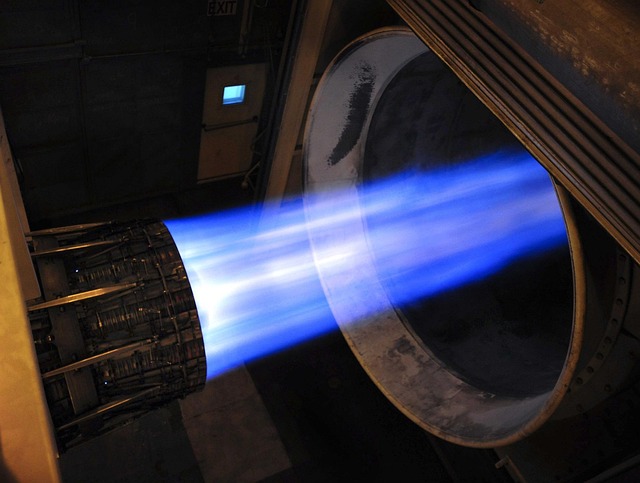Older homes in San Antonio built before 1980 may contain asbestos in thermal systems due to its historical use as an insulator. Asbestos testing is crucial for these properties to prevent health issues like mesothelioma and lung cancer from exposure to harmful fibers during renovation or repair. Professional inspectors use specialized equipment for thorough ACM identification and assessment, ensuring safety standards and peace of mind. Regular inspections by experts are vital for protecting residents, future occupants, and adhering to regulations regarding asbestos-containing materials (ACMs).
In San Antonio, home buyers and sellers alike face a critical consideration: asbestos risks in older homes. This ancient building material, once prized for its insulation and fire-resistant properties, now poses significant health hazards. Understanding these risks is paramount. This guide delves into the importance of thermal system inspection as a key component in identifying and mitigating asbestos exposure during renovation or purchase. From comprehensive testing procedures to expert interpretation, we equip you with knowledge to navigate this complex issue safely.
- Understanding Asbestos Risks in Older Homes
- The Role of Thermal System Inspection
- Comprehensive Asbestos Testing Procedures
Understanding Asbestos Risks in Older Homes

Many older homes in San Antonio, built before the 1980s, may contain asbestos in their thermal systems due to its widespread use as an insulator and fire-retardant material during that era. Asbestos testing for older homes is crucial because exposure to asbestos fibers can lead to serious health issues, including mesothelioma and lung cancer. Even minimal disruption of asbestos materials during renovation or repair projects can release harmful particles into the air, posing risks to both occupants and workers.
Homeowners living in older San Antonio properties should be aware of potential asbestos hazards and consider regular testing to ensure safety. Professional asbestos inspectors employ specialized equipment and techniques to identify and assess asbestos-containing materials (ACMs) in thermal systems such as insulation, boilers, and piping. Early detection through proper asbestos testing is essential for minimizing health risks and facilitating informed decision-making during renovation or remodeling projects.
The Role of Thermal System Inspection

Thermal system inspection plays a crucial role in asbestos testing for older homes in San Antonio. It involves meticulously examining heating, ventilation, and air conditioning (HVAC) systems to identify potential sources of asbestos contamination. Given that many older homes in San Antonio may still have asbestos-containing materials, such as insulation or pipe wrappers, these inspections are essential for ensuring the safety of residents and future homeowners. By identifying and mitigating asbestos risks early on, thermal system inspections help prevent serious health issues like mesothelioma and asbestosis.
In light of this, regular and thorough inspections become a critical component in maintaining a healthy living environment. For homeowners concerned about asbestos testing in older homes, working with professionals who specialize in these assessments is paramount. They employ advanced techniques and tools to accurately detect asbestos fibers, providing peace of mind while adhering to stringent safety standards. This proactive approach not only protects current inhabitants but also ensures the long-term well-being of those who may purchase or inhabit these properties in the future.
Comprehensive Asbestos Testing Procedures

When it comes to asbestos testing, especially in older homes in San Antonio, a comprehensive procedure is paramount to ensure safety and compliance with local regulations. The process typically involves several steps to identify and assess any potential asbestos-containing materials (ACMs). First, an inspection by trained professionals examines various areas of the property, including attics, walls, flooring, and insulation. During this visual assessment, experts look for signs of damage, degradation, or visible ACM.
Subsequent to the initial inspection, sampling becomes the next critical phase. In San Antonio, where older homes may contain outdated materials, carefully selected samples are collected from suspected locations. These samples are then sent to accredited laboratories for detailed analysis using advanced techniques like x-ray fluorescence (XRF) and transmission electron microscopy (TEM). The results provide definitive information about the presence, type, and level of asbestos in the home’s thermal system inspection, enabling informed decisions regarding remediation or safe coexistence with these potentially hazardous materials.
In conclusion, thorough asbestos testing and thermal system inspection are vital steps in ensuring the safety of older homes in San Antonio. By understanding the risks associated with asbestos and implementing comprehensive testing procedures, homeowners can protect their health and make informed decisions regarding remediation. Regular inspections and proactive measures are key to navigating the challenges posed by this hazardous material, ultimately fostering a safer living environment for folks across the city.
